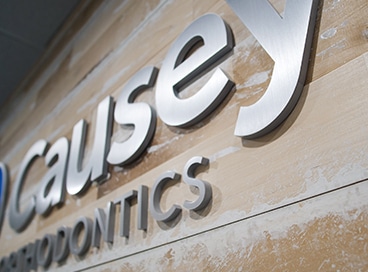Some Known Questions About Orthodontics.
Some Known Questions About Orthodontics.
Blog Article
Orthodontics Fundamentals Explained
Table of ContentsNot known Factual Statements About Orthodontics Some Known Details About Orthodontics Excitement About OrthodonticsSome Known Factual Statements About Orthodontics Some Known Facts About Orthodontics.Getting My Orthodontics To WorkSee This Report about Orthodontics
You might feel some discomfort for some time when your dental braces are first placed on and when they are readjusted. It will certainly take a little time to obtain used to your dental braces and they can trouble your lips and cheeks - Orthodontics. If this takes place, a relief wax can be applied to your dental bracesIt is crucial to clean your braces in addition to the front, back and eating surface areas of the teeth. Your dental practitioner or orthodontist will provide you suggestions on how to clean and on how to floss using floss threaders. After flossing, roll it up in a little ball and put it in the garbage.
Moms and dads should manage their children to see to it they do a good job cleansing their teeth and braces and follow the guidance of their dental professional or orthodontist. If you have braces, do not bite on hard things such as ice and nuts. Do not chew the ends of pens or pencils.
8 Simple Techniques For Orthodontics
Issues that are not fixed can trigger the treatment to last much longer. The traditional metal dental braces, there are tooth-coloured ceramic braces that are less noticeable. Braces and elastics can also be multicoloured.
It guides the instructions of tooth movement and jaw growth in somebody that is still expanding. There are various sorts of headgear and they might be worn throughout any kind of part of the orthodontic treatment. Your orthodontist or dental practitioner will reveal you just how to place on the headgear and tell you the length of time to use it daily.
Not known Details About Orthodontics
They might need to be worn constantly or part of the time. Tooth elimination might be required if your teeth are crowded or if a tooth is severely out of position. Jaw surgical procedure (or orthognathic surgical treatment) may be required when there are major distinctions in the size or placement of the upper and reduced jaws.
An orthodontist is a dentist trained to identify, avoid, and treat teeth and jaw irregularities. Orthodontists function with individuals of all ages, from youngsters to adults.
The 2-Minute Rule for Orthodontics
All orthodontists are dentists, but not all dentists are orthodontists. Orthodontic residency programs offer extensive, concentrated direction for dental professionals. They concentrate on two areas: How to appropriately and safely move teeth Just how to properly assist advancement in the teeth, jaw, and faceOnce an orthodontist has actually completed training, they have the choice to come to be board accredited.
Indicators on Orthodontics You Need To Know
If you have only small malocclusion, you might be able to make use of clear dental braces, called aligners, as opposed to typical dental braces. Some people require a headgear to assist move teeth right into line with stress from outside the mouth. After dental braces or aligners, you'll require to wear a retainer. A retainer is a personalized tool that keeps your teeth in position.
They're most often used on children. They can create added space in the mouth without needing to pull teeth. If you have a serious underbite or overbite, you may need orthognathic surgery (also called orthodontic surgical procedure) to extend or shorten your jaw. Orthodontists use wires, medical screws, or plates to support your jaw bone.
Orthodontics for Dummies
Orthodontists may perform surgical treatment, exams,X-rays,and more to assist you acquire a more comfortable, much healthier smile. An orthodontist is concentrated on your bite, so something like a broken tooth would certainly be managed by a dental practitioner. Orthodontists are dental experts yet not all dental experts are orthodontists. Orthodontists are concentrated on your bite, or the method your teeth meshed, and the straightness of your teeth.
One of the indicators of a beautiful smile is a healthy and balanced collection of teeth and excellent dental health. A lot of individuals have gapped, misaligned, irregular teeth that can make them imperfect.
Orthodontics Things To Know Before You Get This
Addressing orthodontic problems early can also prevent problems like jaw discomfort and periodontal disease, guaranteeing long-lasting dental well-being. Orthodontic treatment is known for its capacity to change smiles, yet its advantages expand beyond mere looks (Orthodontics). From promoting far better dental wellness to enhancing self-esteem, can profoundly impact individuals' lives. A few of these advantages are: One of the considerable orthodontic devices is that it launches a transformative procedure beyond tooth placement.

These changes are important for maintaining development and making certain the treatment remains on track according to the well established strategy. The orthodontist creates a personalized treatment strategy based on the diagnostic documents and the individual's distinct demands and choices. This strategy details the advised activity to resolve the determined orthodontic issues and attain the wanted outcome.
Report this page